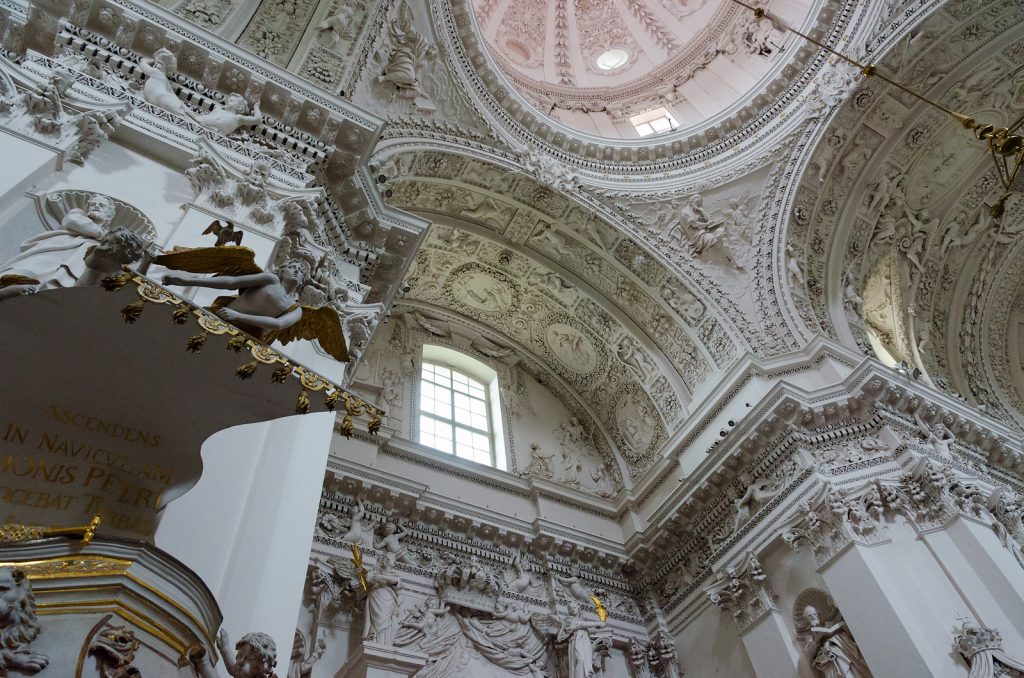Stucco is one of the most common building materials used throughout the world. Its rich history dates back to ancient times and tells quite the story. From art to architecture, from ancient Rome to the modern United States, stucco has been a part of history for over 9000 years. A brief historical overview of stucco shows the transformation from the ancient to modern stucco siding contractor.
Ancient History
During the late Republic and early Empire of Rome, builders used stucco for decorating vaults, private and public buildings, tombs, and baths. The Romans discovered that adding reactive silica and alumina such as volcanic earth could solidify stucco more quickly. Hereafter this became the standard formula for stucco.

The famous baths at Hadrian’s Villa were made of stucco in the year 120 CE. Ancient Romans made stucco from a white lime plaster, which made it lightweight and easily worked. Because it was light and adaptable, ancient stucco contractors found it to be a great material to mold to the curvature of ceilings.
In ancient Mesopotamian and Persian art, there was a popular tradition of using stucco in figurative and ornamental reliefs. This trend is also found in Islamic art. Notably, the city of Abbasid Samarra, Iraq has many stucco buildings like the Great Mosque of Samarra. In ancient Greece, a stucco siding contractor would use it on interior and exterior walls as early as 1400 BCE.
In ancient India and China, stucco-like plasters were spread over rough stone or brick walls to smooth out surfaces. During the Middle Ages, Europeans added malt, beer, hair, milk, and eggs to stucco plaster to assist the setting process. In ancient Egyptian tombs, Egyptians coated walls with stucco then painted them. Each nation and era in history had its own spin on stucco, but the central concept remained the same.
Adding Portland Cement
These ancient uses of stucco had a different composition than the stucco we use today. Modern stucco includes portland cement, aggregates, and water. Portland cement is a gray powder that reacts with water to bind aggregates together. Iron, shale, clay, and limestone are ground together and the power is baked in a kiln. The dried product is Portland cement. Joseph Aspdin, a British stone mason, invented this in 1824. He named the product Portland Cement because it looked like a stone found on the Isle of Portland located off the British Coast.
EIFS
Modern stucco was the industry standard until the invention of exterior insulation finishing systems, or EIFS. EIFS is essentially a cladding system for stucco. Developed in post-WW II Europe, EIFS was initially used in retrofitting masonry walls. Builders started using EIFS in the 1960’s, but it didn’t really catch on until the mid-1970s.
Today, EIFS has become the most tested and well-researched system in the construction industry. It is the best performing cladding when compared to brick and cementitious fiberboard. EIFS provides massive energy savings, reduces environmental harm, and improves indoor air quality.

Modern Stucco Siding Contractor
With a rich history and beautiful aesthetic, stucco is a great product for your home’s siding. If you’re considering stucco siding for your home, you are going to need an experienced and reputable contractor. Royal State Construction has an A+ rating from the Better Business Bureau and has been screened and approved by Home Advisor for five years. Royal State provides both EIFS and traditional stucco siding as well as beautiful stone siding designs. Royal State’s expert staff is ready to assist you. Contact Royal State Construction today so you can make your own mark in the history of stucco.






